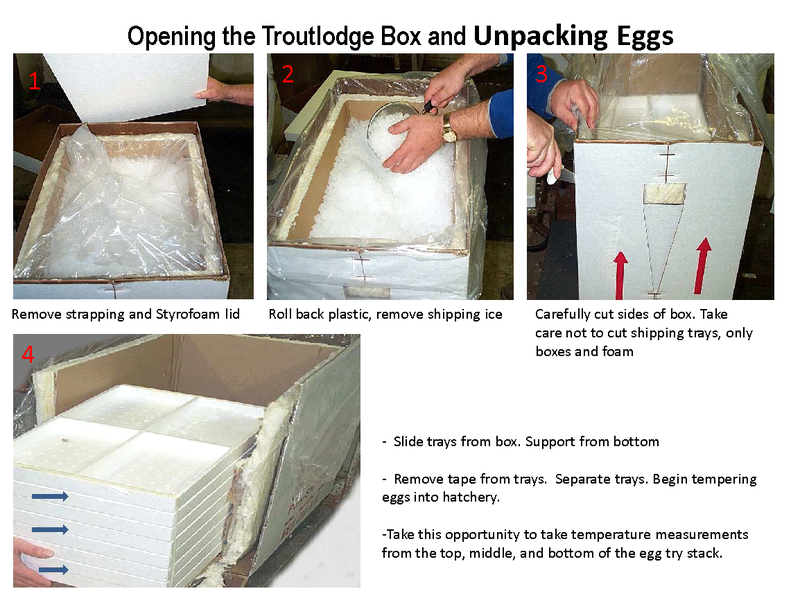Published on Dec. 19, 2019
Receipt of eggs
A great deal of care is taken in the genetic selection of fish, spawning and incubation, and finally the packaging and transportation of each shipment of Troutlodge eggs. An equal amount of care taken by the receiving hatcheries should ensure complete satisfaction and success of every shipment received.
Pre-arrival arrangements
Before the eggs are received on the farm, all the equipment required for the procedures of rehydrating and disinfecting the eggs should be carefully checked, cleaned and disinfected.
The hatchery equipment and incubating system should also be properly disinfected with a recognised iodine based disinfectant, that is not harmful to the eggs. If alternative disinfectants are used it is then essential to flush the system with copious amounts of clean water to remove traces of the disinfectant that may be harmful to the eggs.
Water flows, oxygen and other parameters, indicated later in this report, should be carefully checked once incubation is set up.
Transport
Having received your eggs please note the condition of the boxes on arrival at the airport and again at the farm. If the boxes appear to be damaged or are leaking, make a note of any damage and report this to the freight agent or airline before leaving the airport.
Under such circumstances take photographs and report the damage to Troutlodge, regardless if you subsequently submit a claim or not. The shipment should then be transported in cool conditions as quickly as possible to the farm.
The pre-documentation will advise you how many boxes you will be receiving so ensure that you have adequate space in your transport vehicle. The boxes should never be laid on the side or upside down so ensure that the “This Way Up” arrows are carefully adhered to.
Opening the Troutlodge box
The diagram below illustrates the recommended method of opening a Troutlodge box.

Opening Troutlodge box and unpacking eggs
Observations to be made
Once opened the following should be carefully and immediately noted:
- The condition and amount of the remaining ice.
- The condition of the trays containing the eggs.
- The condition of the eggs in the trays. Estimated numbers of any dead (white) eggs.
- Does it appear that box may have been inverted or placed on its side during transport – are the eggs all on one side of the trays or evenly distributed in the trays.
- The temperature of the eggs in the trays (top, middle and bottom trays).
- Any other observation regarding the boxes, trays, ice or eggs.
- The date and time of arrival of collection of the eggs at the airport.
- The date and time of arrival of the eggs at the hatchery.
- The start time of unpacking the boxes if different to arrival time at hatchery.
- The time that the eggs are placed in the incubators or hatching troughs after rehydration and disinfection.
- The temperature of the incubating water in the hatchery.
- The oxygen saturation of the incubating water.
- Ambient air temperature.
- Any other relevant condition such as turbid water from heavy rainfall, abnormal weather conditions, etc.
These observations and notes should be made and retained regardless of whether the shipment looks in good condition or not. The information is invaluable in monitoring success rates of shipments and any variances in those rates over time.
Many hatcheries have a standard form on which they record all the information suggested above and these forms are filed for subsequent reference if required. A sample form is shown at the end of this guide.
In the unusual event that there is any subsequent problem in the development or hatching of the eggs or performance of the alevin (young fish) this information is essential to support any claim that may be made. If any specific problems are noted it is very helpful if photographs can be provided to support the notes or claims made.
